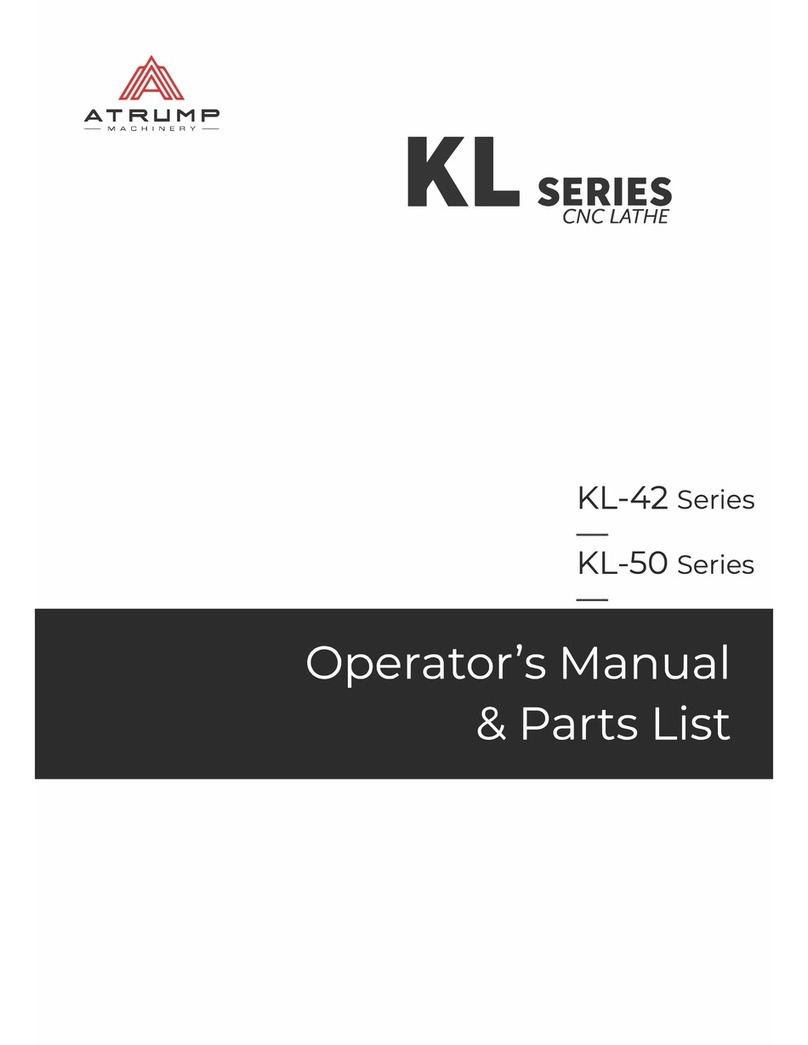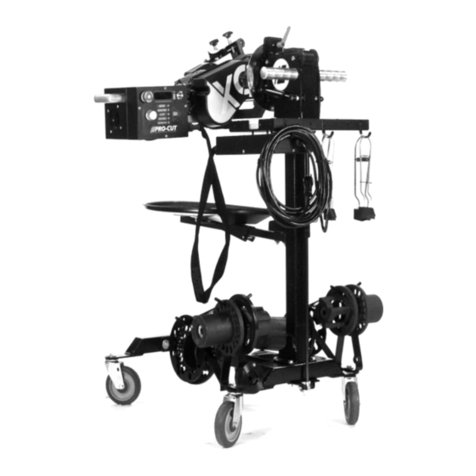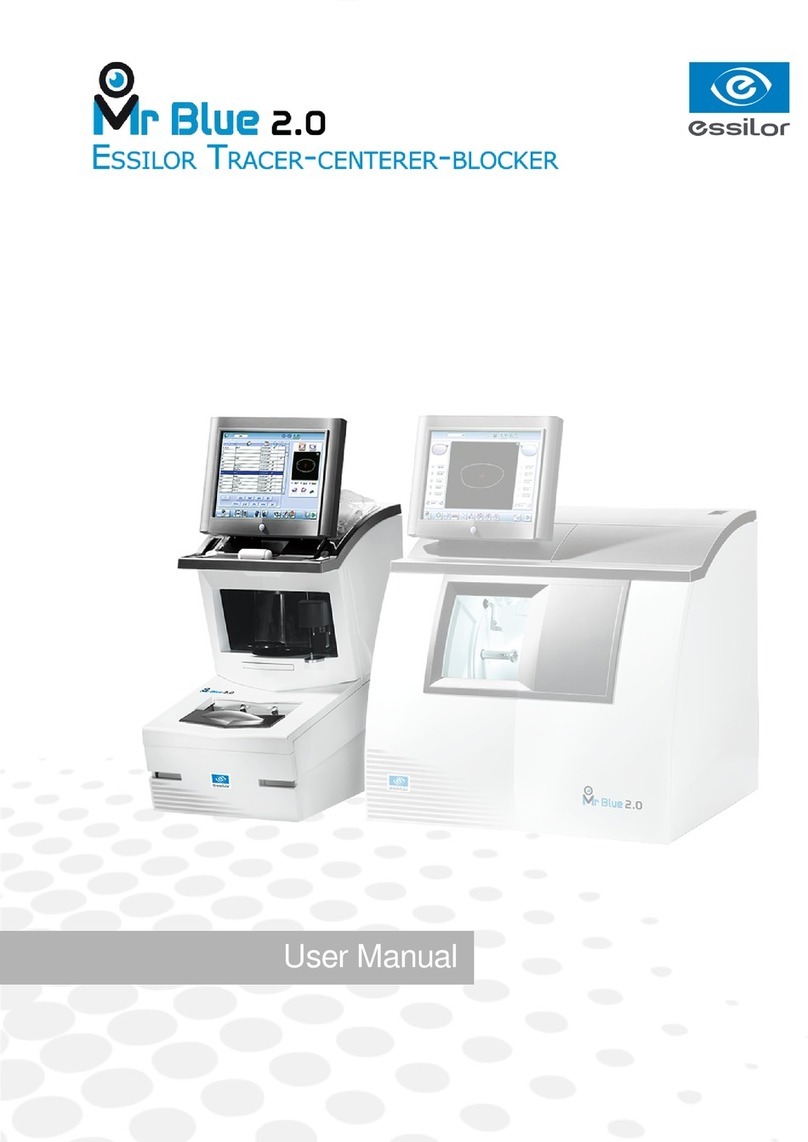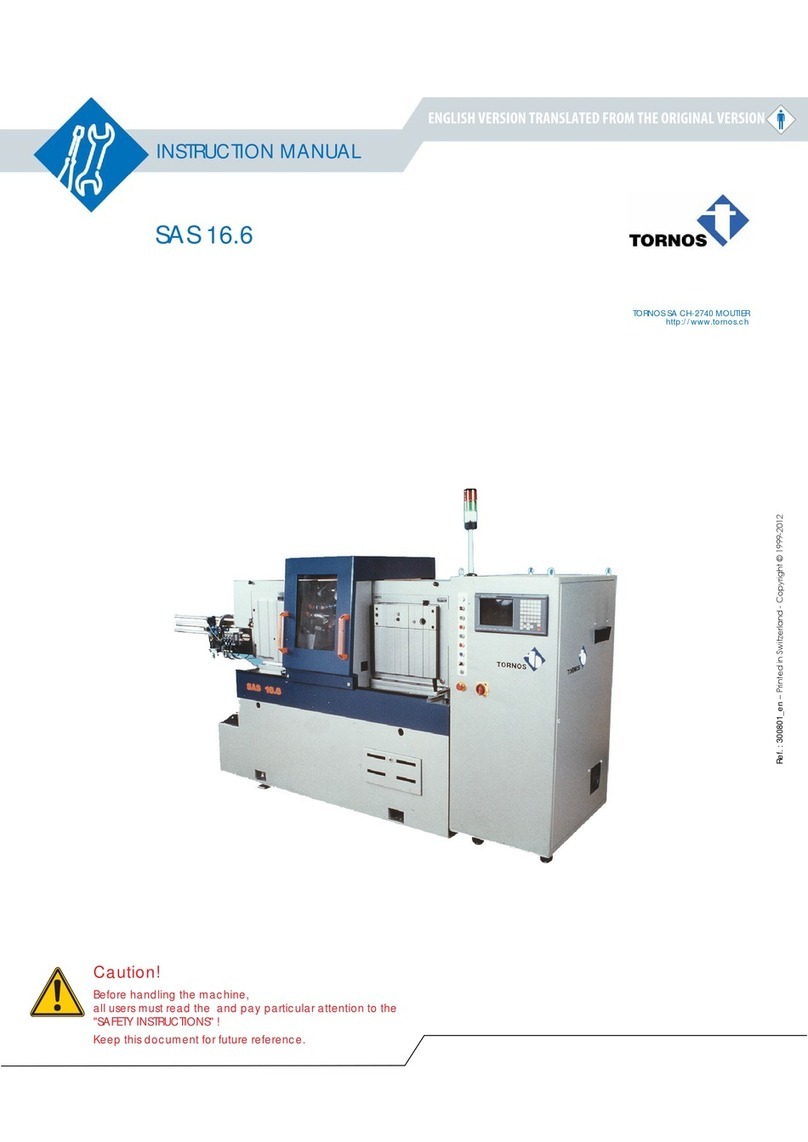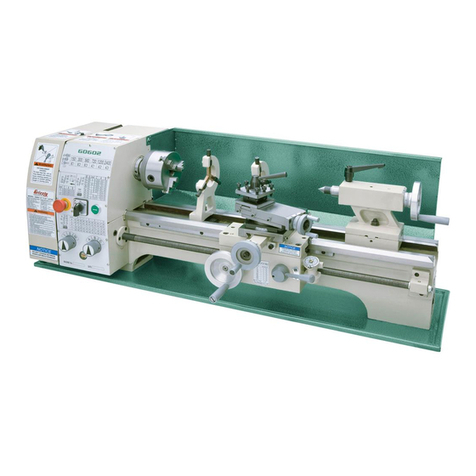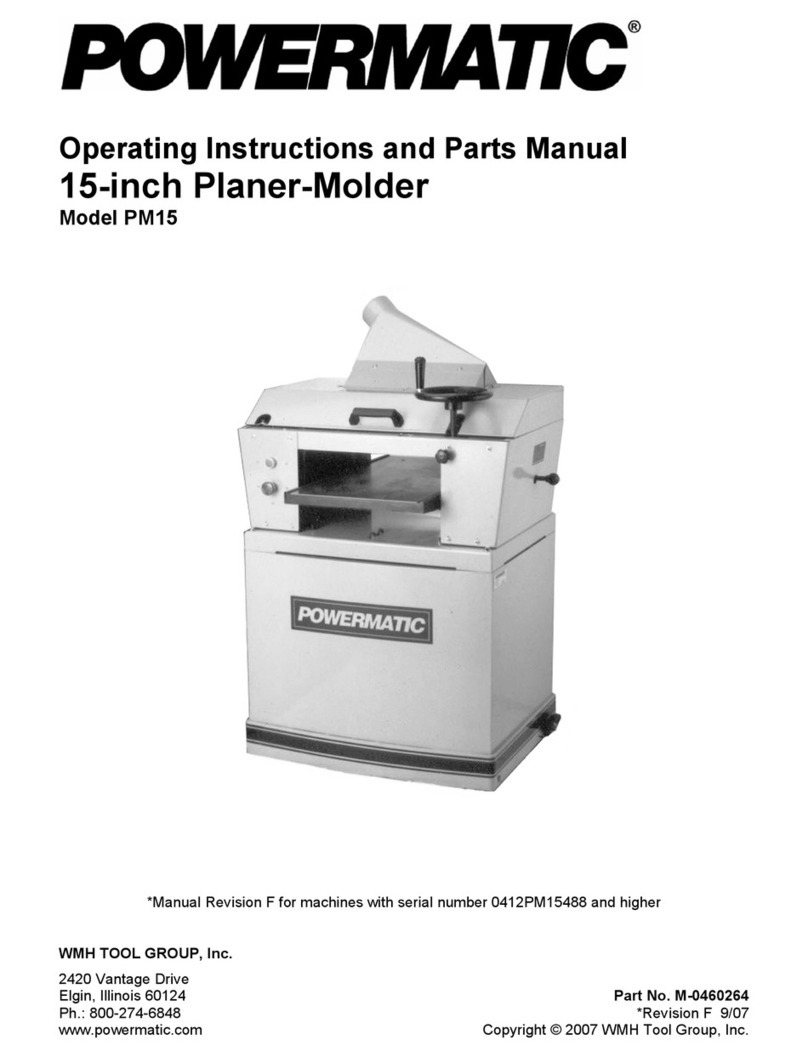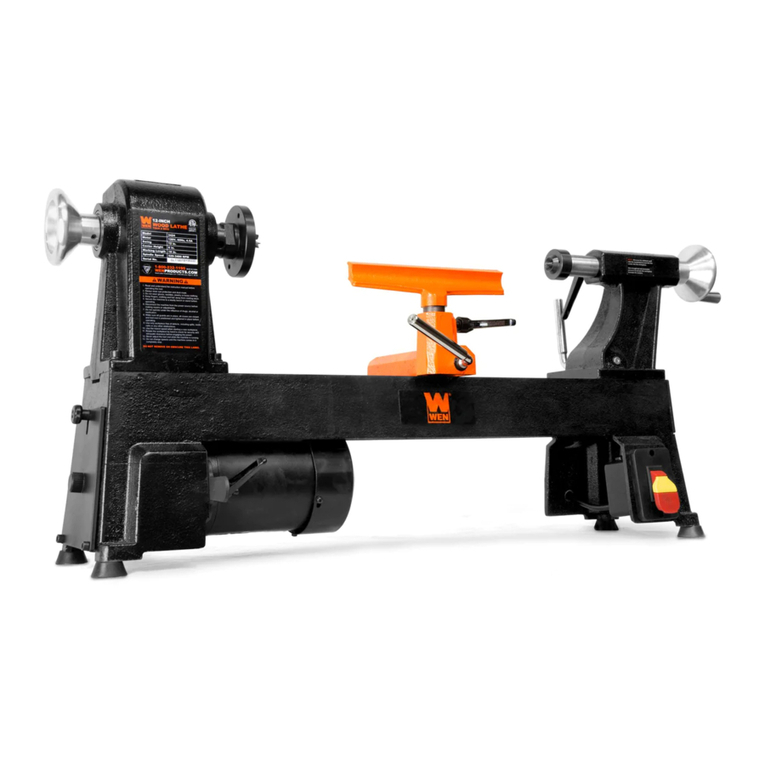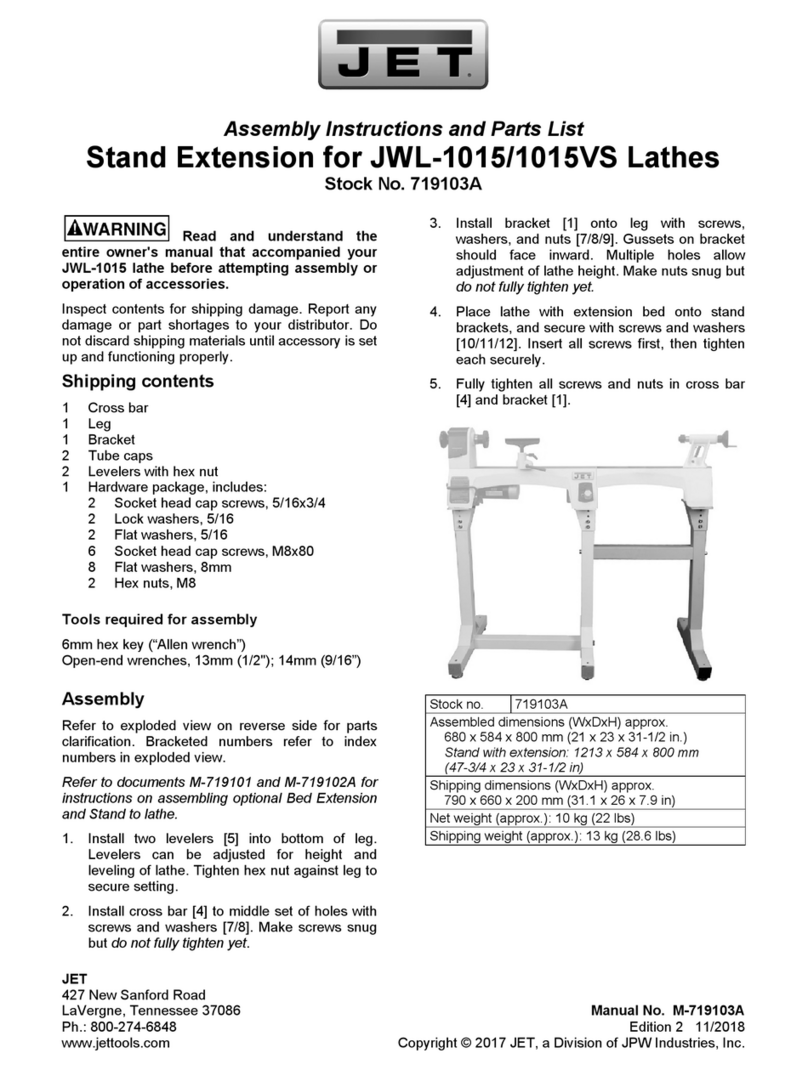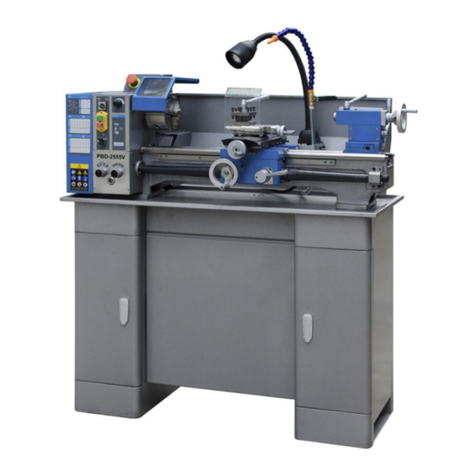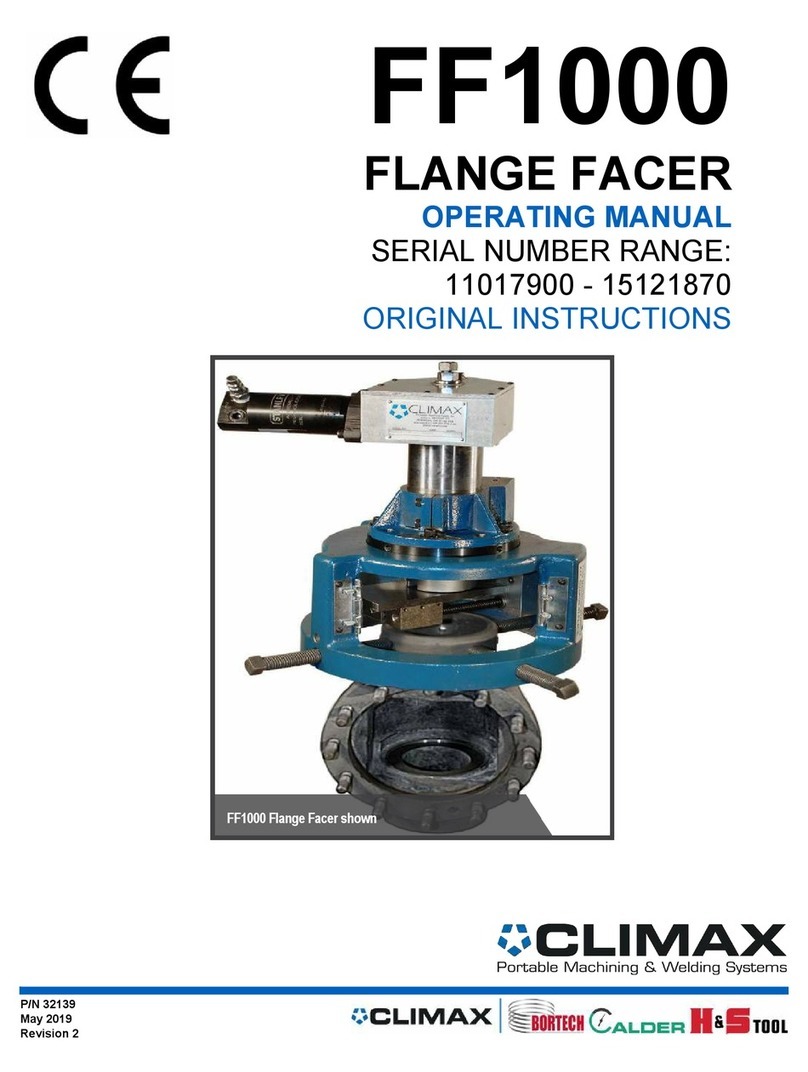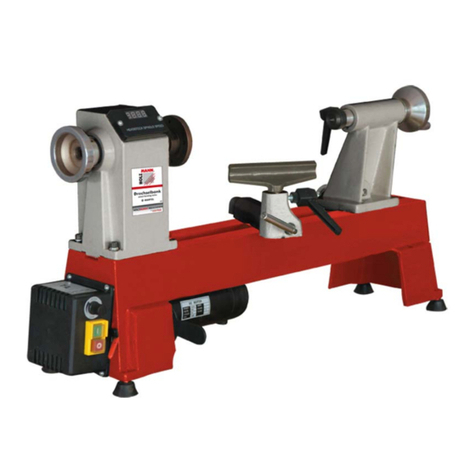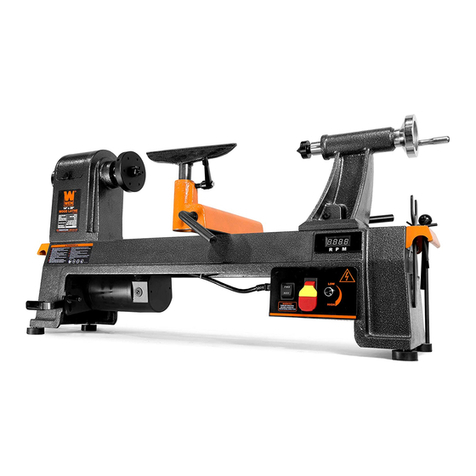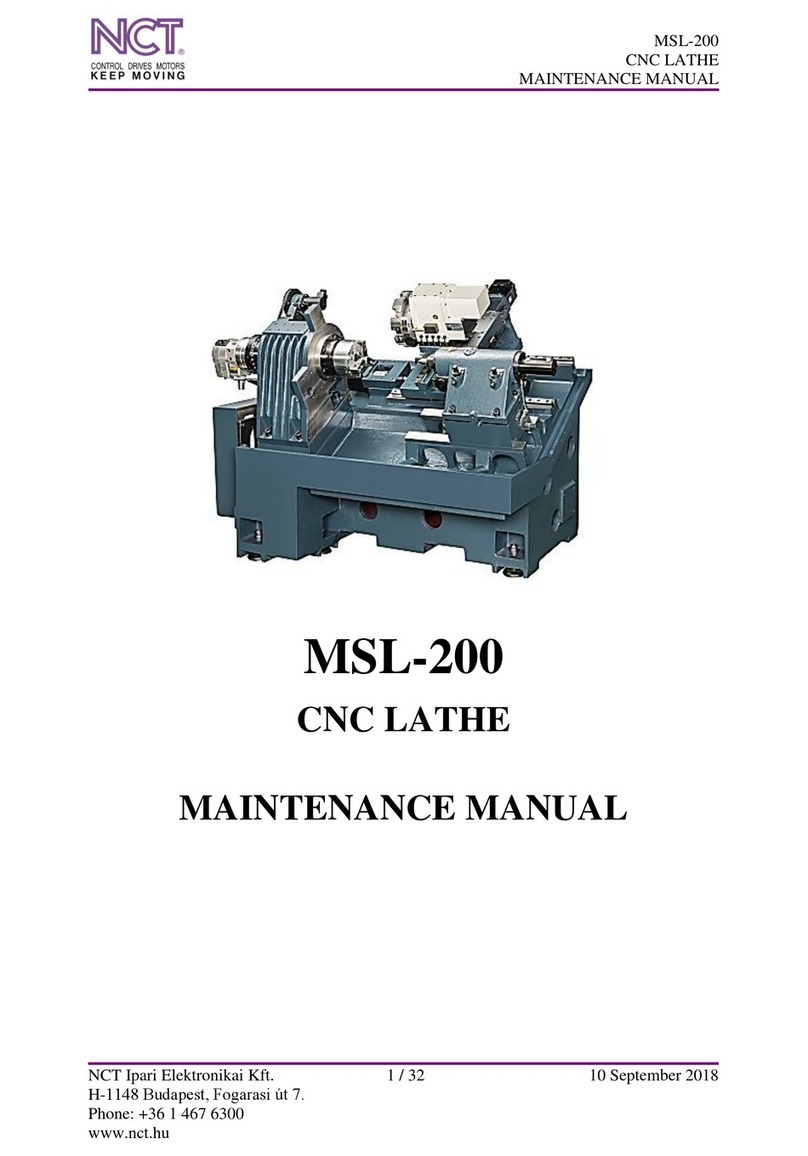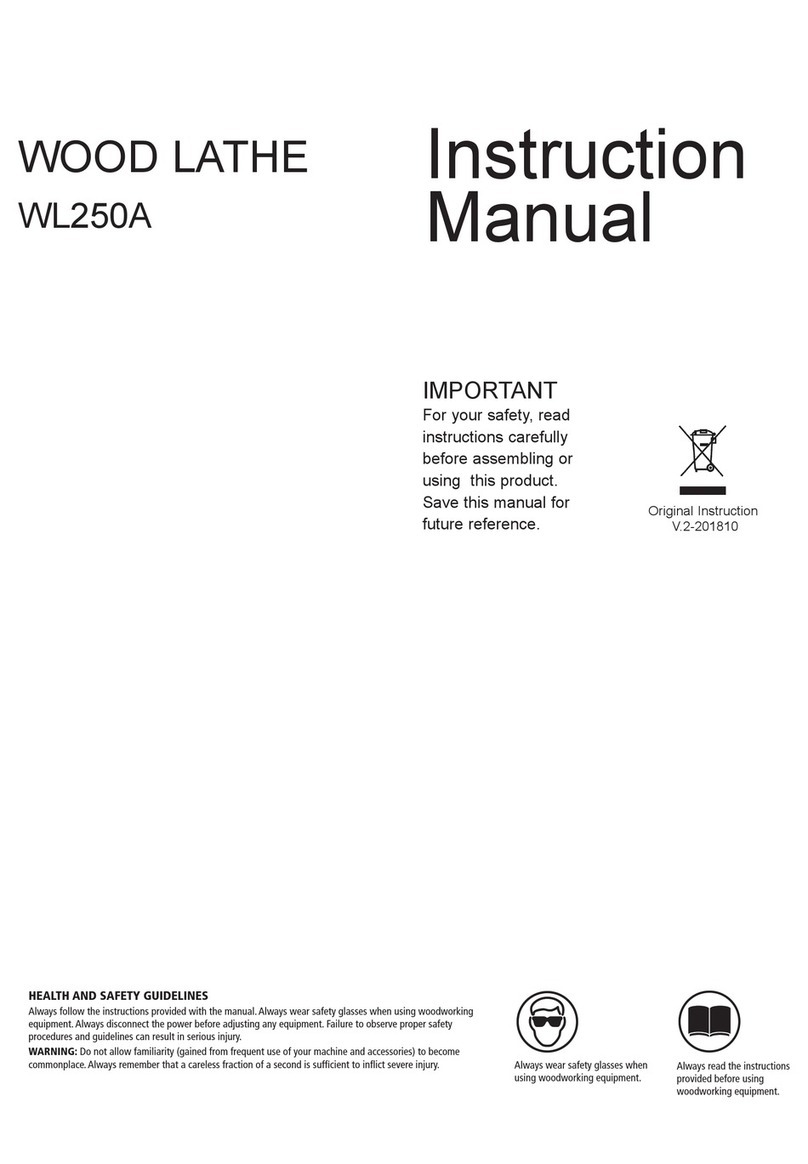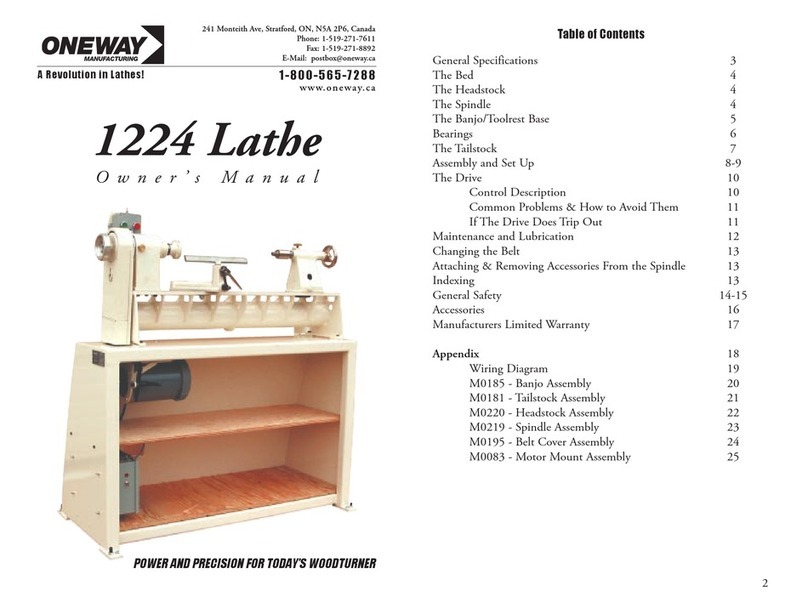Atrump AL52 Manual

AL52
/
AM52

CONTENTSC-1
Operation's & Maintenance Manual EV-860/1050
Chapter 1 Safety Instructions
1.1 General Remarks..............................................................................................1-1
1.2 Safety Description of Lifting and Movement (unpacked) .................................1-6
1.3 Electrical Safety Description.............................................................................1-8
1.4 Machine Safety Description ..........................................................................1-11
1.5 Potential Danger Areas...................................................................................1-20
1.6 Warning Signs on the Machine.......................................................................1-22
Chapter 2 Machine Specification
2.1 Introduction.......................................................................................................2-1
2.2 Noise Level.......................................................................................................2-1
2.3 Machine Specification.......................................................................................2-2
2.4 Electrical Equipment Specification....................................................................2-5
2.5 Machine Accessories........................................................................................2-6
2.6 Machine Accuracy ............................................................................................2-7
2.7 Dimensions.......................................................................................................2-7
2.8 Main Part ..........................................................................................................2-9
2.9 Power Performance Diagrams........................................................................2-10
2.10Working Range and Workpiece Weight..........................................................2-11
2.11Dimensions of the Working Table...................................................................2-12
2.12Dimensions of the Machine Tool Holder.........................................................2-16
2.13Specifications of the Machine Tool .................................................................2-17
2.14Stroke Limits for Axes and ATC......................................................................2-18
Chapter 3 Shipping/Handling and Installation
3.1 Preparation.......................................................................................................3-1
3.2 Machine Lifting..................................................................................................3-4
3.3 Storage...........................................................................................................3-15
3.4 Installation.......................................................................................................3-16
3.5 Cleaning..........................................................................................................3-17
3.6 Leveling ..........................................................................................................3-17
3.7 Inspection .......................................................................................................3-20
3.8 Polycarbonate Panels.....................................................................................3-21
3.9 Installation of the Optional Accessories ........................................................3-22

C-2 CONTENTS
EV-860/1050 Operation's & Maintenance Manual
Chapter 6 Lubrication
6.1 Importance of Lubrication ............................................................................... 6-1
6.2 Lubrication System Diagram...........................................................................6-3
6.3 The Oil Guide Table........................................................................................ 6-7
Chapter 7 Mechanism
7.1 Headstock System ........................................................................................7-1
7.2 Feed-Motion Transmission Mechanism ........................................................7-5
7.3 Tool Magazine ............................................................................................ 7-12
7.4 The Fully-Enclosed Splash-Guarding Enclosure ......................................... 7-15
7.5 Mechanism Adjustment ............................................................................... 7-16
Chapter 8 Pneumatic & coolant systems
8.1 Schematic Diagram of the Pneumatic System ............................................8-1
8.2 Schematic Diagram of the Pneumatic Piping System..................................... 8-3
8.3 Pneumatic System ........................................................................................8-4
8.4 Self compensation of pneumatic syste ........................................................... 8-5
8.5 Sematic Diagram of the Coolant System
Chapter 9 Preventive Maintenance
9.1 Daily Maintenance .......................................................................................9-1
9.2 Weekly Maintenance....................................................................................... 9-1
9.3 Semi-annual Maintenance ............................................................................9-1
9.4 Annual Maintenance .....................................................................................9-2
9.5 Cutting Coolant Reservoir............................................................................... 9-2
9.6 Notice .......................................................................................................... 9-3


Chapter 1
Machine Safety Regulation

Machine Safety Regulation 1-1
1.1 General Safety
The precautions included in this manual are NOT intended to cover all hazards
that may occur in this machine. Prevention of accidents requires the constant
attention of all personnel in vicinity of this machine to make a safe situation and to
provide a safe work environment. A machine and its related equipments are only as
safe as its personnel are safety minded. Proper maintenance of machine and use of
personal protective equipment will contribute as much towards safety as any of the
mechanical or electrical safety devices on this machine.
Using Restriction:
The purpose of these introductions is to advise the customer and the operator on
the design, construction, operation and maintenance of VERTICAL MACHINING
CENTER. The attached illustrations, drawings and diagrams are intended to show the
outstanding features. But are not binding for dimensional accuracy or further details.
It provides extremely high machining accuracy. Be careful of rigidity of working
material, setting, operation, maintenance and troubleshooting, please reference
specification to use suitable workpiece and setting. It is forbidden to use for non-cold
metal e.g. wood, plastic or stone, pyroforic materials and working with flammable
metal working fluids. This machine was designed for certain applications only. We
strongly recommend that this machine NOT be modified and/or used for any
application other than for which it was designed. If you have any questions relative to
its application DO NOT use the machine until you have had detail instruction from
your dealer.
This machine provides several safety devices to protect operator and machine from
injury and damage, but the operator should not only rely on these protective devices
in anytime and any place. Before starting to operate this machine, operator should
read carefully about "Danger" and "Warning" description of this manual and
understand the operation and maintenance of these safety devices completely.

1-2 Machine Safety Regulation
Signal words call attention to the safety sign and designate a degree or level of
hazard severity. The signal words for product safety signs are DANGER, WARNING
and CAUTION. When no federal, provincial, state or local government code,
regulation, standard or guidelines specifies a particular’s signal word, selection of the
signal word shall be made in accordance with the definitions provided below.
DANGER indicates an imminently
hazardous situation which, if not avoided,
will result in death or serious injury. This
signal word is to be limited to the most
extreme situations.
White lettering on Red Background
Safety Alert Symbol – White triangle
Red exclamation point.
WARNING indicates a potentially
hazardous situation which, if not avoided,
could result in death or serious injury.
Black lettering on Orange Background
Safety Alert Symbol – Black triangle
Orange exclamation point.
CAUTION indicates a potentially hazardous
situation which, if not avoided, may result in
minor or moderate injury. It may also be
used to alert against unsafe practices."
Black lettering on Yellow Background
Safety Alert Symbol – Black triangle
Yellow exclamation point.
1.1.1 Danger:
1.1.1.1 Do not touch Control Panel, Transformer, Motor, Connection Box and
High Voltage connectors and Joint, otherwise will cause electric shock
seriously.
1.1.1.2 Do not touch buttons or switches with wet hands, otherwise will cause
electric shock.
1.1.1.3 Grounding all machines. A terminal for the connection of the external
ground conductor is provided in the vicinity of the associated phase
conductor terminals with marked "PE". It should make sure the "PE"
terminal being connection before power supply.
1.1.1.4 All children and visitors should be kept at a safe distance from work area.
1.1.1.5 SHUT OFF the power, isolated energy and sure the machine is stationary
before leaving the machine, inspection, maintenance, adjustment and
cleaning.
1.1.1.6 Repairs should only be carried out by qualified-persons using original
spare parts, otherwise this may result in considerable danger to the user.
1.1.1.7 Never attempt to change the settings of all protective devices without
consulting Atrump Machinery Inc. When the machine out of order while
running, shut it down and turn to servicemen for help as soon as possible.

Machine Safety Regulation 1-3
1.1.2 Warning:
1.1.2.1 The floor will become slippery with water and oil and cause danger. So
the floor must keep clean and dry to avoid any accident.
1.1.2.2 If a job requires two or more people, every coordinating signal execution
must be re-set unless it is a common coordinating signal.
1.1.2.3 Working area must be plenty enough to avoid any danger.
1.1.2.4 Be familiar with the position of emergency stop button. Do not look for its
position until it is needed.
1.1.2.5 Do not touch any buttons or switches carelessly.
1.1.2.6 Be sure it is correct before turning on switches.
1.1.2.7 Be sure machine stopped completely and power already been off before
changing fuses.
1.1.2.8 Space surrounding working table must be completely secured as to avoid
any accidents and to prevent workpieces apart from the table.
1.1.2.9 No loose clothing, neckties, rings bracelets, or other jewelry to get caught
in moving parts. Wear protective hair covering to contain long hair.
1.1.2.10 Person(s) who operate the machine must be trained, read and understood
to use the safety measures, and possess the ability to obey and execute
the regulation stated in this manual.
1.1.2.11 Keep guards in place and functional before starting the machine for each
mode of operation.
1.1.2.12 Don't use machines in damp or wet locations or near potentially explosive
environment. Keep working area well lighted and ventilation.
1.1.2.13 The workshop of user shall be equipped with the fire extinguisher or other
devices in according to the local safety regulations and be deeply careful.
1.1.2.14 If ancillary equipment is removed the original guards or safety devices
shall be replaced. The connection of ancillary equipment including any
necessary modification of the guarding of the machine shall not afford
unprotected access to danger areas of the machine. Atrump and our
authorized agency are responsible for a future connection of the machine
with ancillary equipment only if we ourselves have designed such
connection.
1.1.2.15 If opening of a movable guard of the ancillary equipment gives access to
a danger area of the machine, this movable guard shall be a guard for the
machine of the same type safety-function which are required for this
danger area of the machine.
1.1.2.16 Ancillary equipment, the presence of which prevents access to a danger
area of the machine and which can be removed without the use of a tool,
shall be interlocked with the machine control circuit in the same way as
the movable guard for the area concerned. Fixed guard with safety
distance need to according with ISO 13857 can be considered also.
1.1.2.17 If the opening of a movable guard of the machine gives access to a
danger area of ancillary equipment this guard shall also meet the

1-4 Machine Safety Regulation
requirements specified in the standard applicable for that ancillary
equipment (e.g. ISO 10218-1 for robot equipment).
1.1.2.18 Explain the operation of this machine and its safety devices to the
operator prior to his/her operating the machine. Use demonstration as a
positive means of instruction and be certain that the operator fully
understands the machine and is qualified to handle it. It is recommended
that you question the operator on the points that were explained to
ascertain if he/she has fully understood all the instructions.

Machine Safety Regulation 1-5
1.1.3 Caution:
1.1.3.1 Turn off no fuse breaker of main power circuit when power supply is
insufficient or not stable.
1.1.3.2 Only the recommended or same grade hydraulic oil, lubricant oil and
grease are allowed to use on this machine.
1.1.3.3 Only the same specification and same grade fuses are allowed to use on
this machine.
1.1.3.4 To prevent from any damage of NC unit, operation panel, electrical
control panel...etc., the machine location should avoid electric shock.
1.1.3.5 Please do not change original parameter. If it is necessary, please keep
recording the value of original parameter and set the same value after
being changed.
1.1.3.6 Do not take away, cover or dirt the "WARNING", "DANGER" and
"NOTICE" plates. If they are blur or losing, please contact with us or your
local dealer for new plates.
1.1.3.7 Disposing wasted material and wasted lubricating oil shall obey the local
regulation and be deeply careful.
1.1.3.8 Only competent, well-trained personnel should be permitted to operate or
perform maintenance on this machine.
1.1.3.9 Before operating this machine, be sure that the responsible parties read
and understand this operation manual as well as the warning plates on
the machine.
1.1.3.10 Please use suitable personal protective equipment e.g. gloves, eye
protection…etc. during operation and setting.
1.1.3.11 Keep the machine clean and free from accumulation of hydraulic fluid, oil,
grease, water and trimmed flash. It is difficult, if not impossible, to
perform maintenance when the machine is covered with dirt and oil.
1.1.3.12 When person stand on the machine accessible areas, take care the risks
of slip/falling.
1.1.3.13 It is essential that operator is adequately trained in the safe use,
adjustment and operation of the machine. The training of the user
operator should be carried out by our authorized agent or service
engineer in an oral/practical in site of the ordered press, including
protective device explanation, press mechanism, operation/use.

1-6 Machine Safety Regulation
1.2 Safety Description of Lifting and Movement (unpacked)
This vertical machining center is composed of headstock, tool magazine, main
column, working table, saddle, bed base, operation panel, pneumatic system,
lubrication system, electrical cabinet and CNC unit. Those components are
connected with electrical cables and/or pneumatic piping circuit.
During transportation, the machine body and coolant tank are packed separately.
The shipping and handling equipment used should be able to lift a gross weight
of 9 tons for AL52/AM52 at least. Due to sizes of the machine, it is
recommended to lift this machine with crane and use only the sling frame
provided by us. Nevertheless, read the following section carefully before
handling the package.
1.2.1 Danger:
1.2.1.1 This machine weight is gross weight of 9 tons for AL52/AM52, the safety
load of the handling equipment must be greater than10 tons for
AL52/AM52,. If you are not sure of the safety load of handling equipment,
please confirm it with their supplier. Do not lift or move the machine if you
are not sure of their load. It will damage the machine or handling
equipment or hurt people.
1.2.1.2 When use the derrick lifting, it is need use exclusive crowfoot to avoid
machine was broken, don’t use substandard of crowfoot and method, or
not maybe to cause movement or machine was damage, more, makes
people to die.
1.2.1.3 When lifting machine with wire ropes when machine is packed, be sure
that the bearing stress of the wire rope is greater than 10 tons for
AL52/AM52. It will damage the machine or the handling equipment or hurt
people if it is not strong enough.

Machine Safety Regulation 1-7
1.2.2 Warning:
1.2.2.1 Check whether the machine is balanced or not before lifting or moving this
machine. It is prohibited from lifting or moving the machine unbalance,
otherwise it will damage the machine and hurt people around it.
1.2.2.2 Be careful of when lifting or lowering the machine, the speed should not be
so fast that may cause any unpredictable vibration or crash. The machine
will fall and crash if the lifting position does not balance that will damage
the machine and hurt people around it.
1.2.2.3 When machine is lifting, it is prohibited people and car go underneath the
machine to avoid any accident.
1.2.2.4 Before the machine was lifting, it is prohibited people and car go up around
the machine, also prohibited people to climb the crowfoot and wire ropes,
to avoid accidental condition of people happen to fall.
1.2.3 Caution:
1.2.3.1 When lifting and moving machine, please pay attention whether there are
any people or blockage around the machine or in the moving path. Please
clean out the blockage and advise people away from the machine and
machine moving path before lifting and moving this machine to avoid any
danger.
1.2.3.2 The speed should not be too fast when lifting and moving the machine and
it should not to stop and brake immediate or the machine will fall down
because the inertia is so big that machine will vibrate and lose its balance
point.
1.2.3.3 Only certified people are allowed to operate the material handling
equipment to lift or to move the machine. It is prohibited unqualified people
from lifting and moving the machine to avoid any accident.

1-8 Machine Safety Regulation
1.3 Electrical Safety Description
To assure the safety of NC operation, please note the followings:
1.3.1 Wiring:
1.3.1.1 Ensure that the electrical conductors used is equivalent or superior to the
performance rating described in maintenance manual.
1.3.1.2 Only qualified engineer is allowed to connect the power cable.
1.3.1.3 Do not connect power cable which will cause noise on the power panel of
this machine such as welding machine and high frequency quench
machine.
1.3.1.4 Do not connect the power cable of this machine to the instantaneous
voltage drop power source or power panel.
1.3.2 Grounding
The cross-section of incoming supply protective conductor and each phase
conductors must be in accordance below table. It is important to identify the voltage
of source with machine. The voltage of connecting source terminal is marked L1, L2,
L3 on the electric cabinet.
A terminal for the connection of the external ground conductor is provided in the
vicinity of the associated phase conductor terminals with marked "PE".
The cross-section of a grounding wire need more than 10 mm2and resistance to
ground of less than 100Ω. Gnerally, the NC machine should be grounded to a
separately grounding rod. If an independent ground can not be provided for the
machine, Please ground as follows:
1.3.2.1 Connect a single conductor to its own grounding terminal. This will avoid
some serious accidents resulting from ground currents which might
otherwise flow in the NC machine if a peripheral device should malfunction.
1.3.2.2 Be careful of when using concrete reinforcing rods as grounding points.
These reinforcing rods are often used to ground equipment because they
usually offer a resistance to ground of less than 100Ω. When doing so,
make connection as follows: (This also applies to connecting ground ires
to regular grounding terminal.)
1.3.2.3 Do not use the same grounding reinforcing rod or grounding terminal for
other devices since this could lead to line noise such as that produced by
welders or high frequency quenching machines.
1.3.2.4 Use a durable grounding terminal with an adequate electrical performance
rating.
1.3.2.5 Use a separate grounding wire of minimal length.
1.3.2.6 Check the resistance to ground by actual measurement. Be sure of less
than 100Ωif the single device is connected to its own grounding rod.
1.3.2.7 Desirable independent grounding: Independent grounding of several
equipment please refer to figure 1.

Machine Safety Regulation 1-9
Grounding resistance : Smaller than 100Ω.
Common grounding : Grounding as figure 2.
Grounding resistance : 100Ω
*** NOTE: Never ground equipments as figure 3. ***

1-10 Machine Safety Regulation
1.3.3 Environment condition
Generally the machine should be installed as following conditions.However,
these may change over a period of time or in response to seasonal changes.
1.3.3.1 Supply voltage: 0.9 – 1.1 nominal supply voltage.
1.3.3.2 Source frequency: 0.99 - 1.01 of nominal frequency.
1.3.3.3 Surrounding temperature: 5℃~ 40℃
1.3.3.4 Relative humidity: not exceed 50% at 40°C.
1.3.3.5 Altitude: shall be at altitudes up to 1000m above mean sea level
1.3.3.6 Atmosphere: Free from excessive dust, acid fume, corrosive gases and
salt.
1.3.3.7 Avoid exposing the machine directly to sunlight or heat which could raise
the inside temperature.
1.3.3.8 Avoid exposing the NC machine to abnormal vibration.
1.3.3.9 Electrical equipment shall withstand the effects of transportation and
storage temperature within a range of -25°C to 55°C and for short periods
not exceeding 24 hours at up to +70°C.
1.3.3.10Please contact with us or your local dealer if not able to satisfy that
mentioned above.

Machine Safety Regulation 1-11
1.4 Machine Safety Description
1.4.1 Note before Operation:
1.4.1.1Danger:
Before starting to operate this machine, please check and confirm all
cables and wire isolation whether they are damaged or not to avoid electric
shock.
1.4.1.2Warning:
1.4.1.2.1 Understand completely every operation procedure and description on
the manual.
1.4.1.2.2 Wear safety clothes, oil-proof safety shoes, toggles with side shield and
other protective equipment.
1.4.1.2.3 Shut off NC unit, operation panel, electrical control penal and guards.
1.4.1.3Caution:
1.4.1.3.1 Power supply must be sufficient to keep all equipment and machine
running smoothly.
1.4.1.3.2 It must be well protected for cable placed on the ground to avoid contact
with chip as to cause shortage.
1.4.1.3.3 When machine is unpacked or has not been used for a period of time (a
few days or longer), every sliding part must be cleaned and lubricated
and turn on lubricant pump for a while until lubrication oil has lubricated
all the parts before operating it again.
1.4.1.3.4 About lubrication oil viscosity, brand and equivalent grade, please refer
to indication plates or Operator’s & Maintenance manual on chapter 3.6.3
1.4.1.3.5 Check all switches, buttons and operation levers can be operated
smoothly.
1.4.1.3.6 Please turn on main power as following procedure:
Turn on factory's main power supply Turn machine’s main power no
fuse breaker to "ON" or "I"Depress green power push button "ON" on
operator's panel to turn on controller and CRT.
1.4.1.3.7 Check oil quantity in oil tank. Fill it to the required indication if necessary.
1.4.1.3.8 Check coolant quantity, fill it if necessary.
1.4.1.3.9 Please check whether the stand-by signal light is on or not after turn on
controller.

1-12 Machine Safety Regulation
1.4.2 Inspection
1.4.2.1Warning:
1.4.2.1.1 Ensure to turn off the main power supply and put warning signs on
visible spots before inspecting the belt tension. Do not touch or reach
over the pulleys and the belts if the power is still on. Otherwise might
result in squeeze to wounded and disabled.
1.4.2.2Caution:
1.4.2.2.1 Check the pressure readings regularly to make sure all the system
pressures setting are normal.
1.4.2.2.2 Observe regularly if there is any abnormal noise arising inside the
rotating motors, gearbox and other moving or rotating parts.
1.4.2.2.3 Moving or rotating parts are lubricated properly.
1.4.2.2.4 Ensure all the safety guards and safety equipments are installed
properly.

Machine Safety Regulation 1-13
1.4.3 Warming up
According to experience if machine is not warmed up before machining
work piece, which has not been run for a period of time, It will damage sliding
parts and cause oil leakage because sudden thermal expansion destroys
machine accuracy. To prevent from it happening, the machine must be warmed
up after not been run for a period of time.
1.4.3.1Caution:
1.4.3.1.1 Warm up machine under automatic mode and continuously run for 10-20
minutes with spindle speed 500 min-1., X.Y & Z axes rapid traverse
10~15 m/min.
1.4.3.1.2 Check whether machine running is normal or not when warming up the
machine in the mean time.
1.4.3.1.3 The door and safety guards must be closed when spindle speed is over
to avoid any accident. When spindle starts working, please versify
spindle speed limit 10000 min-1 and max. speed. Please note that
machine must be working below the above limits; otherwise it will result
in machine damage or crash and human injury or death.
1.4.3.1.4 All the sliding parts must return to zero in low speed before warming up
machine under automatic mode. Confirm program command is correct
and sliding parts will be executed in accordance with program command
and will not be interfered, or machine will be crashed and damaged.
1.4.3.1.5 When machine stopped to re-set, please return to zero (X.Y.Z.-axis)
manually in low speed and confirm.

1-14 Machine Safety Regulation
1.4.4 Preparation
1.4.4.1 Warning:
1.4.4.1.1 Cutting tool's specification should be the same as this machine
requirement to avoid any accident.
1.4.4.1.2 Broken tool will cause accident. Please replace it when broken.
1.4.4.1.3 Working area lightening must be sufficient for safety inspection.
1.4.4.1.4 Tools and equipments which surrounding the machine must place in
position to keep aisle clean and clear.
1.4.4.1.5 Do not put anything on working surfaces, headstock, saddle, guideway
and covers to avoid any accident happened and secure safety of
operators and people surrounding the machine.
1.4.4.2 Caution:
1.4.4.2.1 Feed the grease to all the grease-lubricated parts, such as ballscrews
and linear guides of the X, Y and Z-axis, at least every month. Feed it
more frequently or even change the grease if the working environment is
hostile. Please use the recommended grease as described in the oil
guide table. please refer to operator's manual recommended oil on
chapter 6.3.
1.4.4.2.2 Use the recommended cutting tools and tool length as described in
Chapter Two of the maintenance manual.
1.4.4.2.3 Always try a light-load machining before doing a heavy-load machining.
1.4.4.2.4 After setting up cutting tool, it is a must to do test cutting and confirm it is
all right.
1.4.5 Operation
1.4.5.1 Warning:
1.4.5.1.1 Operator's hair should not be too long for avoiding unnecessary
accident happened.
1.4.5.1.2 Do not wear gloves to operate the machine, or will cause danger.
1.4.5.1.3 When moving large work pieces, it is required two or more people to
move them to avoid dangers happened.
1.4.5.1.4 Only qualified people are allowed to operate Forklift truck, Lifting
equipment, Crane and other material handling equipment.
1.4.5.1.5 You must pay attention to prevent crash and damage from surrounding
area when operate fork lift truck, crane or other handling equipment.
1.4.5.1.6 The wire rope and lifting equipment must be strong enough to withstand
the load.

Machine Safety Regulation 1-15
1.4.5.1.7 Clamp workpiece safely and closely.
1.4.5.1.8 Stop machine before adjust position of coolant nozzle.
1.4.5.1.9 Do not touch rotating machine parts such as work piece, chuck,
spindle..etc. by hands.
1.4.5.1.10Do not take away safety device from the machine.
1.4.5.1.11Scrape the chips from tool tip by wiper. Do not scrape it directly by
hands, or will be cut and hurt.
1.4.5.1.12Assemble or disassemble cutting tools only when machine is stopped.
1.4.5.1.13When machining graphite, magnesium alloy or any material with powder
chip, operator must wear safety mask or running dust collector. It is
prohibited operator explores himself to dusty environment without
wearing any protection appliances.
1.4.5.2 Caution:
1.4.5.2.1It is prohibited from opening the door during cutting.
1.4.5.2.2When heavy cutting, please note and prevent from chips piling up too
high that chips' temperature will be high and cause fire.
1.4.6 Cutting Interruption
1.4.6.1 Warning
When leaving machine temporarily, please be sure to turn off power on
operator's panel and main power no fuse breaker.
1.4.7 Work Finished
1.4.7.1 Caution
1.4.7.1.1Before cleaning machine or attachments, please turn off all the power
and hang "MAINTENANCE, DO NOT TURN ON THE POWER" warning
plate. It is prohibited from cleaning machine and attachments before
machine stops running to prevent from people injury.
1.4.7.1.2After finished work, Clean machine, attachments, chips, guards and
windows. It is also required to put antirust oil on machine bed and
moving parts to prevent from their rust.
1.4.7.1.3All the machine parts return to original position.
1.4.7.1.4Check whether wipers are broken or not. Replace it if broken.
1.4.7.1.5Check lubricant and hydraulic oil and change them for their dirty or
emulsification.
This manual suits for next models
1
Table of contents
Other Atrump Lathe manuals

